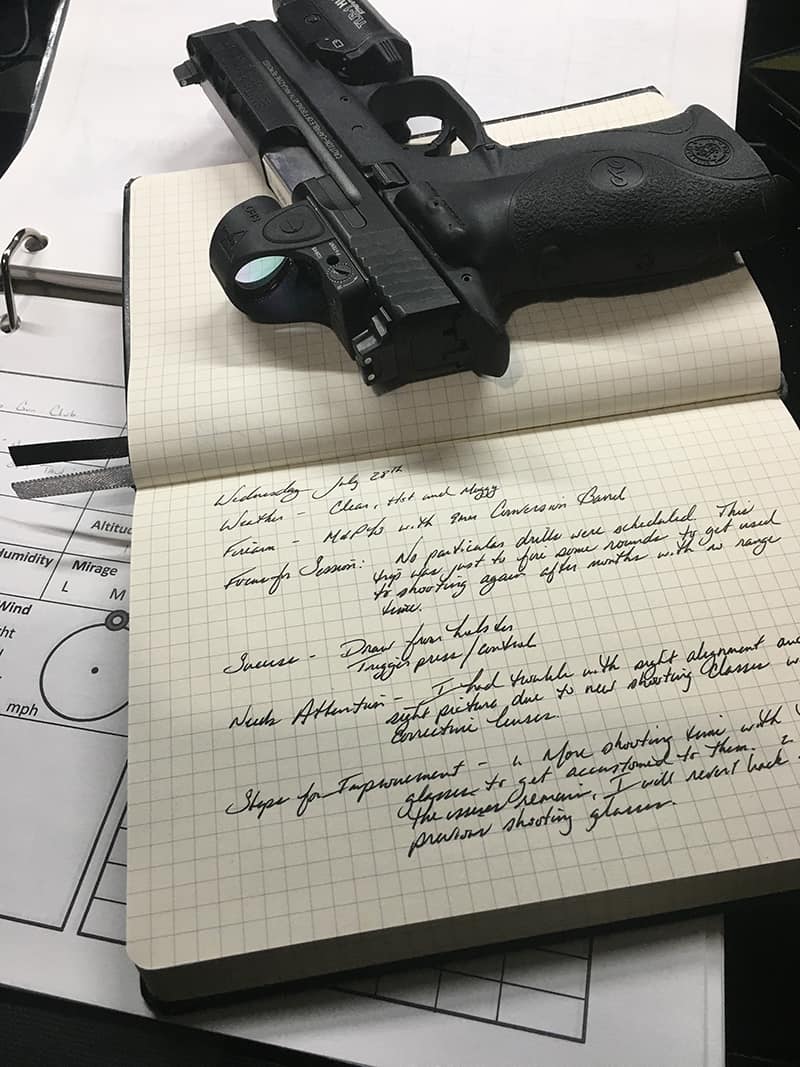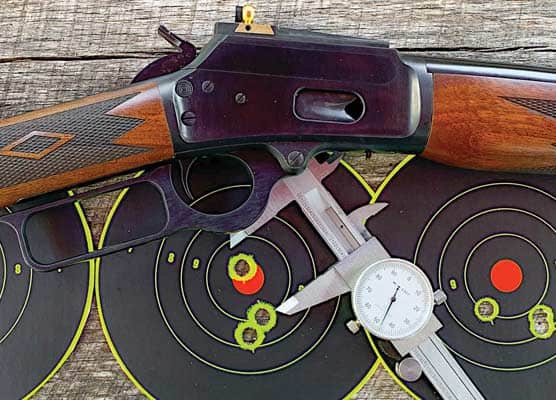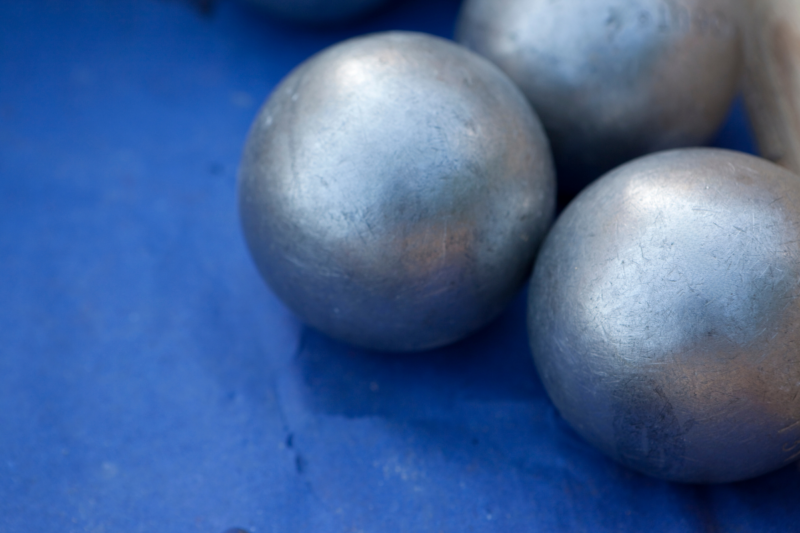5 Reasons You Need a Training Journal
Most shooters I know have never written a word about their shooting. They go to the range and shoot hundreds of rounds just for fun. Sometimes it’s a good thing to do, but wouldn’t you like to get more out of your shooting? Wouldn’t you want to get better at shooting? It’s a rhetorical question: I already know the answer. So, let’s look at how you can turn your fun time into training and improve how well you handle and shoot your firearm. The title has already given away the secret — it’s the use of a training journal.
Maintaining a training journal is nothing more than documenting what you’re good at, where you could use improvement and what you intend to do about it. It’s a way of saying, “Here are my goals, and this is what I’m going to do to achieve them.” The data you keep is as individual as you are and depends solely on what you decide is essential. A typical journal entry for me will have the date, time and weather conditions. It will also answer the following questions:
· What gun (or guns) did I use?
· What was I trying to improve upon?
· What worked for me, and how did I achieve success?
· What didn’t work for me, and why?
· What is my plan to get better, what steps should I take?
What To Include
An entry can be in neat little blocks of a form or just a simple note. It’s up to you. But you should always try to include at least these items. They will provide the data needed for constant improvement. Here are some other benefits of using a training journal each time you shoot.
1. It establishes clear goals.
Having clear-cut goals and writing them down is the first step toward improving. Once you put ink to paper, it’s like you’ve made a contract with yourself. In addition, sharing your goals with your shooting buddies emphasizes you’re more likely to work toward them.
2. It provides a map of your successes.
It can get frustrating at times when things don’t go as planned. For those times, the journal can provide some perspective by letting you look back on what you’ve accomplished so far. You’ll be able to see you are improving and prove it with your previous notes. This can help push you over the slump and refocus efforts toward your goals.
3. It forces you to own your weaknesses.
One of the golden rules of shooting is having a set of canned excuses for the times when you don’t shoot well. Of course, as you get more experienced you can make them up on the spot, but I digress … Every time you go to the range, there will be things that go well and others we’d rather not talk about (publicly anyway). You might even have trouble with something that worked flawlessly in a previous excursion. The journal makes you record them so you can focus your attention on your next trip. As much as I joke about pre-planned excuses, you’ve got to be honest with yourself about what you did well and what didn’t work. It’s the only path to improvement. A journal tracks these.
4. It maps what you need to do for improvement.
Once you’ve assessed what you need to work on, it’s time to formulate specific steps to correct the deficiency. This may take some research. It may require you to learn and practice some new drills. Perhaps you might have to get a friend or a coach to help you get past the problem. The point is the journal forces you to create concrete plans on how to address the issue.
My last trip to the range was a struggle due to months without practice, along with my decision to try new corrective shooting glasses. However, both issues are solvable with more range time.
5. It keeps you focused.
Lastly, a journal forces you to stay focused on improvement. It ensures you don’t stray from your goals. It creates a mindset geared toward continuous improvement, whether you’re a novice shooter or a master-class marksman. If you genuinely believe in your goals, the journal acts as a guide, a critic and a coach to get you where you want to be.
Keeping records of your shooting activities doesn’t have to be complicated or time-consuming. You’ll find it changes over time based on your needs. Try it for six months and see for yourself.



